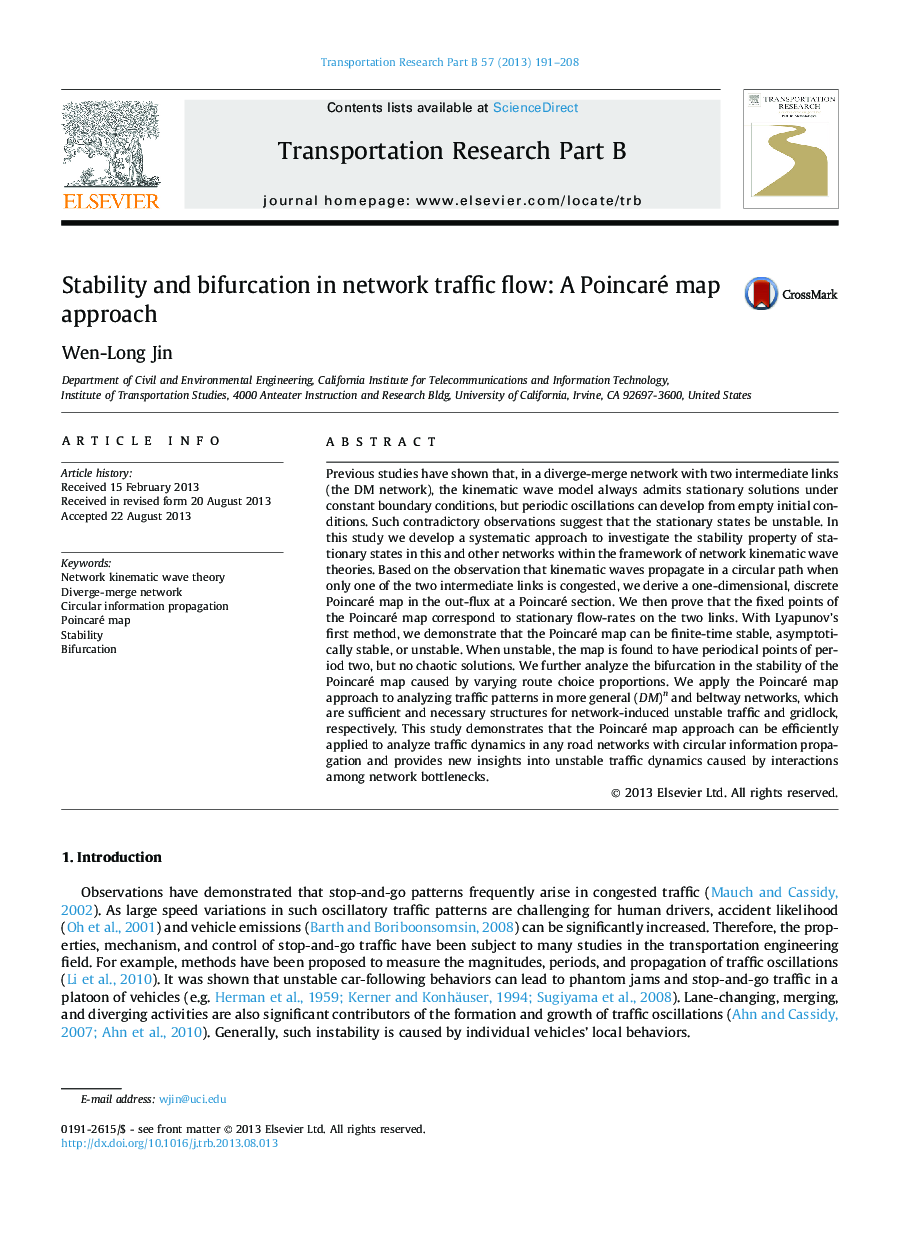| Article ID | Journal | Published Year | Pages | File Type |
|---|---|---|---|---|
| 1131959 | Transportation Research Part B: Methodological | 2013 | 18 Pages |
•A Poincaré map is derived for a diverge-merge network.•The Poincaré map is used to analyze the stability of traffic flow.•Different route choice proportions cause the bifurcation in the traffic stability.•The Poincaré map approach can be applied for (DM)n and beltway networks.•The kinematic wave model in a network may be unstable, but not chaotic.
Previous studies have shown that, in a diverge-merge network with two intermediate links (the DM network), the kinematic wave model always admits stationary solutions under constant boundary conditions, but periodic oscillations can develop from empty initial conditions. Such contradictory observations suggest that the stationary states be unstable. In this study we develop a systematic approach to investigate the stability property of stationary states in this and other networks within the framework of network kinematic wave theories. Based on the observation that kinematic waves propagate in a circular path when only one of the two intermediate links is congested, we derive a one-dimensional, discrete Poincaré map in the out-flux at a Poincaré section. We then prove that the fixed points of the Poincaré map correspond to stationary flow-rates on the two links. With Lyapunov’s first method, we demonstrate that the Poincaré map can be finite-time stable, asymptotically stable, or unstable. When unstable, the map is found to have periodical points of period two, but no chaotic solutions. We further analyze the bifurcation in the stability of the Poincaré map caused by varying route choice proportions. We apply the Poincaré map approach to analyzing traffic patterns in more general (DM)n and beltway networks, which are sufficient and necessary structures for network-induced unstable traffic and gridlock, respectively. This study demonstrates that the Poincaré map approach can be efficiently applied to analyze traffic dynamics in any road networks with circular information propagation and provides new insights into unstable traffic dynamics caused by interactions among network bottlenecks.
